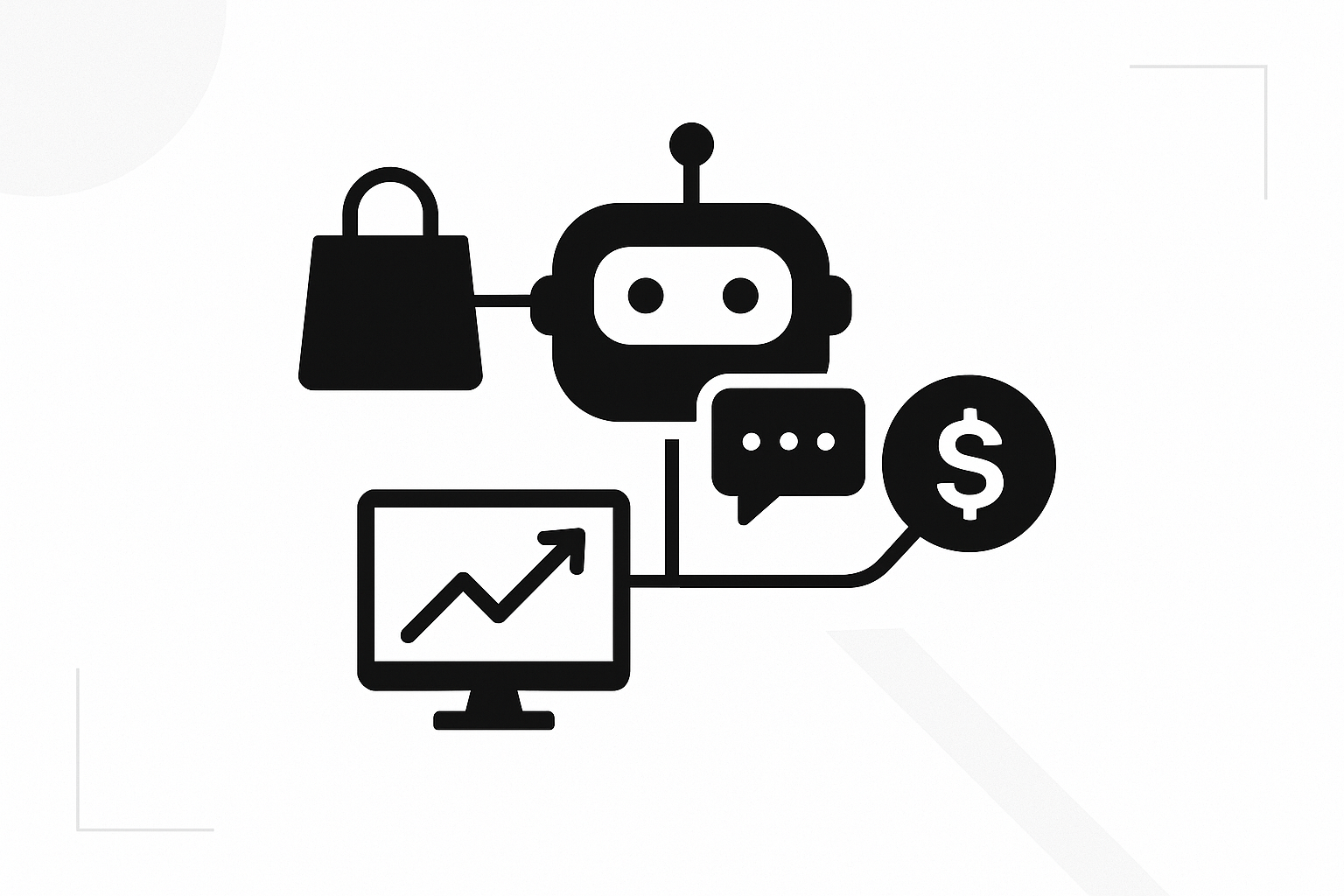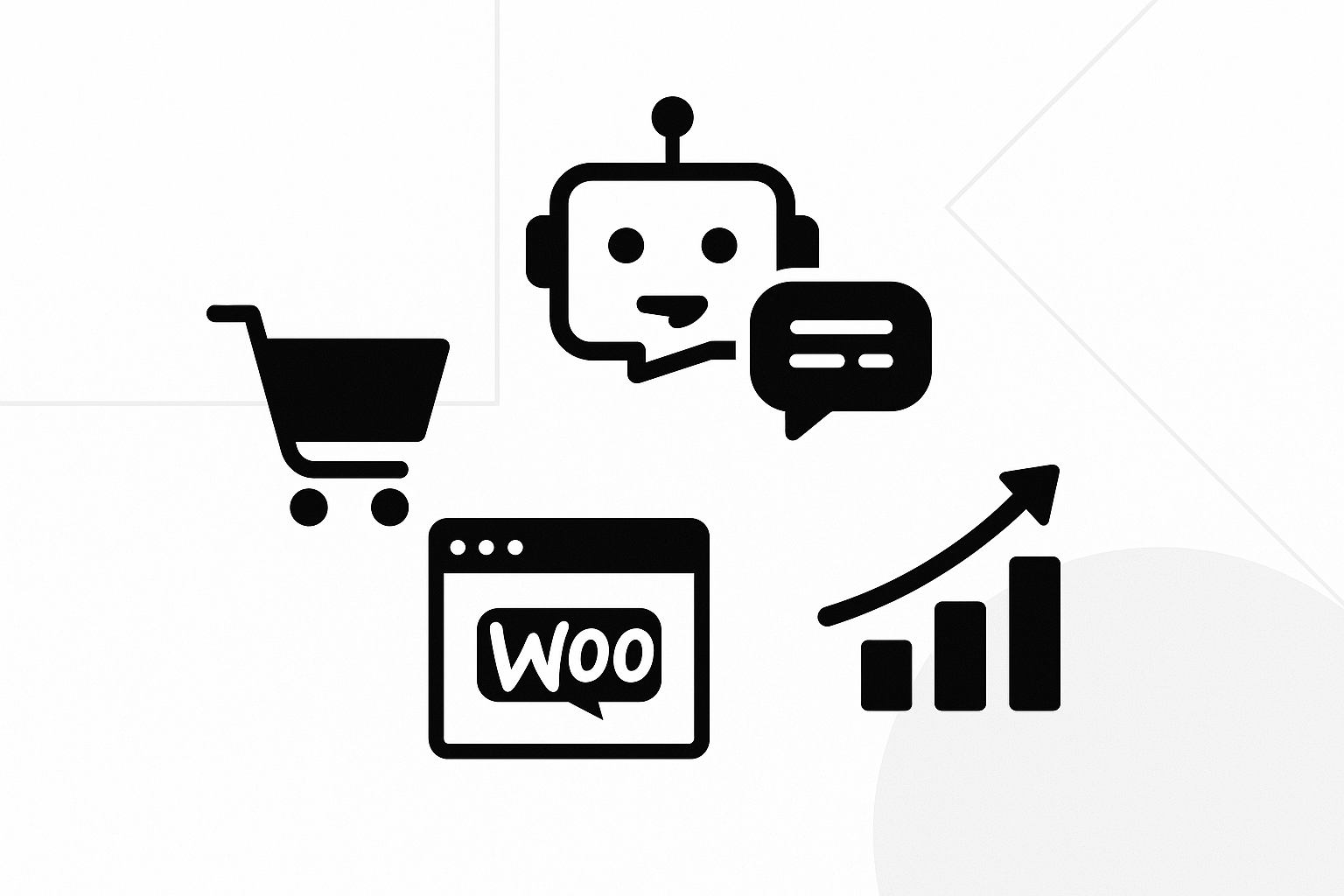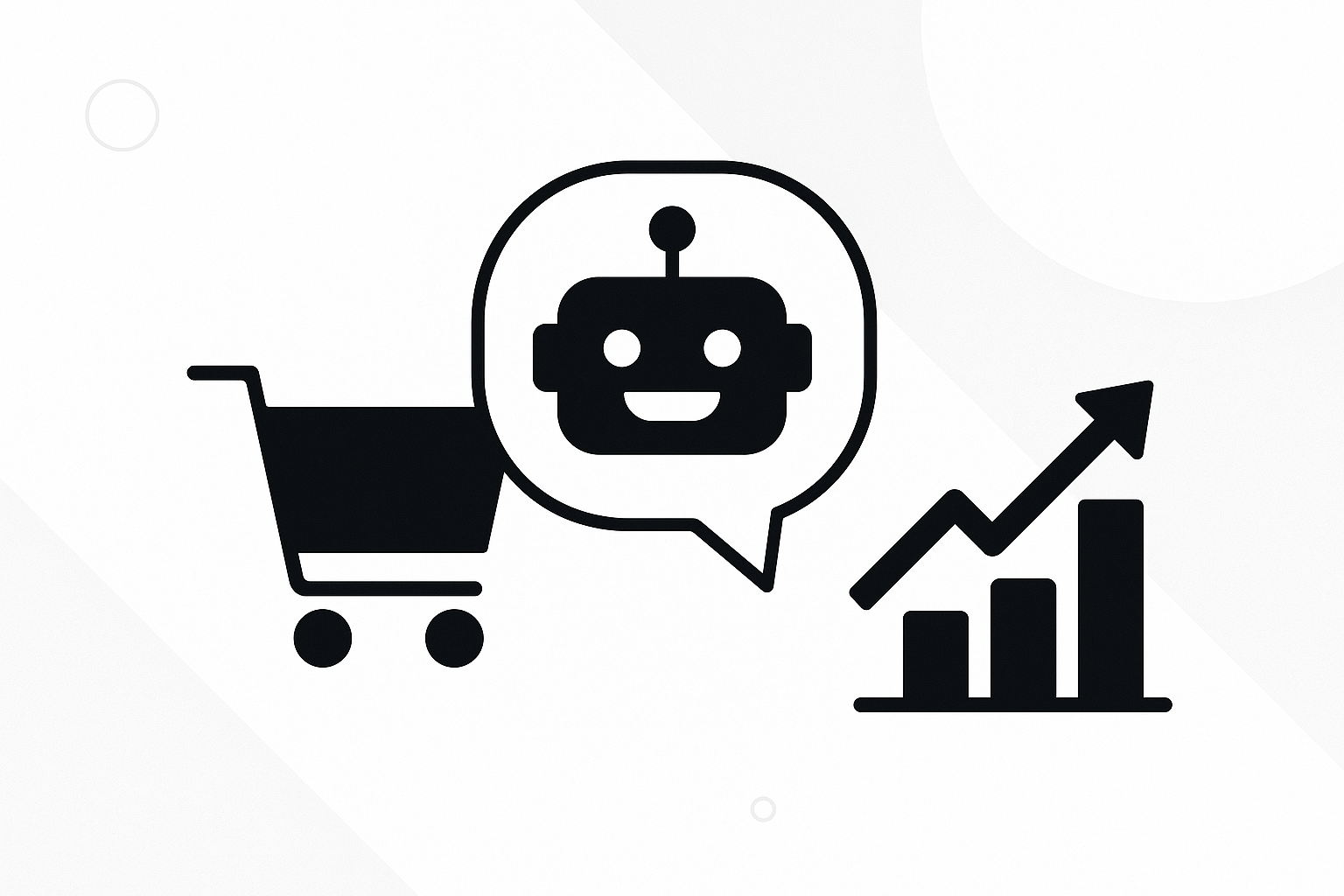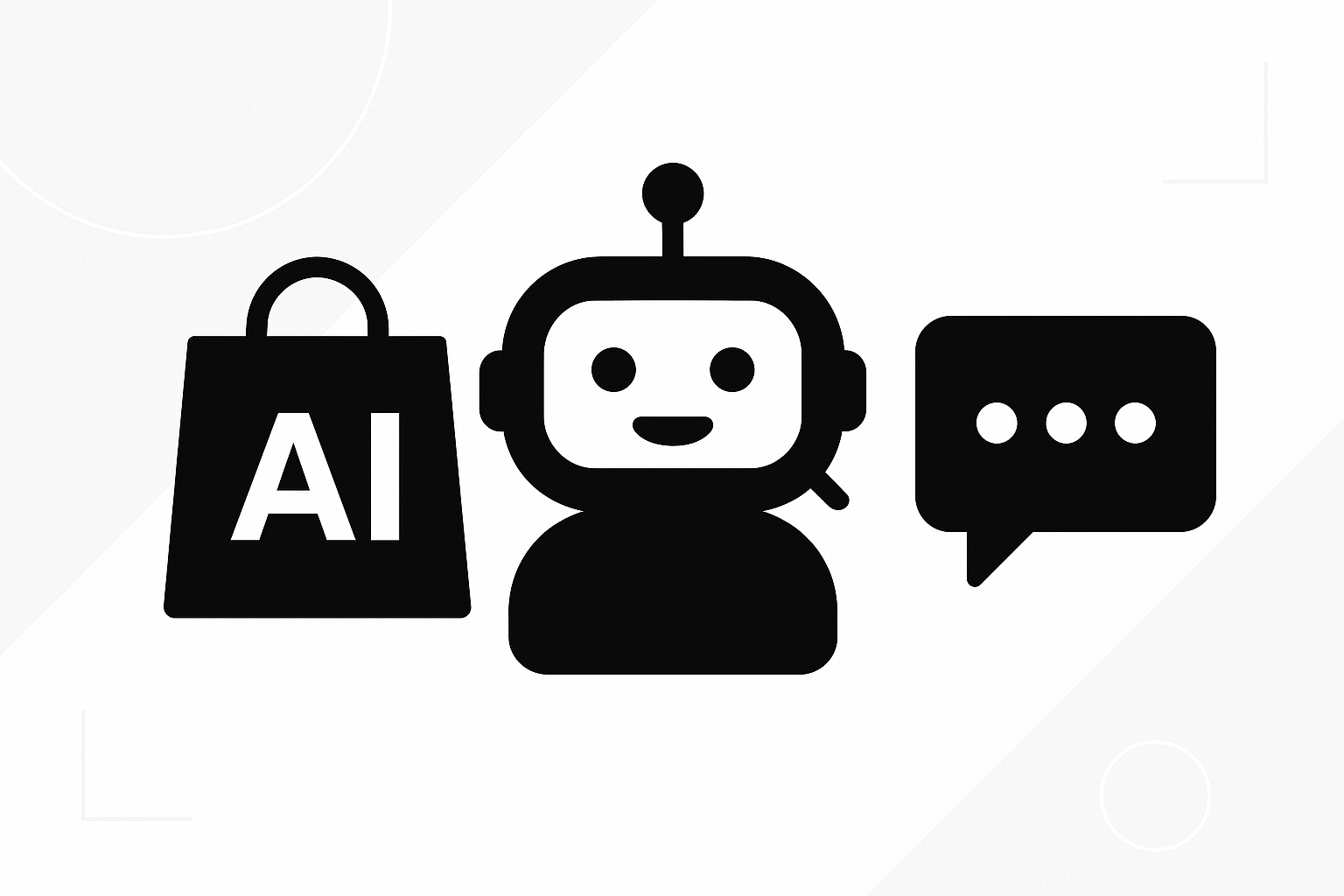Stop Losing Ready-to-Buy Shoppers: The WooCommerce AI Chatbot and WooCommerce Sales Chatbot for WooCommerce Abandoned Cart Recovery, Upsells, and to Increase WooCommerce Conversion Rate
Introduction: You’re Paying for Traffic—But Are You Converting It?
You work hard to get shoppers onto your WooCommerce store—ads, email, SEO, social. Yet too many ready-to-buy visitors bounce or abandon their carts due to friction, slow responses, or uncertainty. The fix isn’t another discount or a bigger ad budget. It’s a smarter on-site experience that guides, reassures, and sells in real time.
This is where a WooCommerce sales chatbot changes the math. A modern, AI-powered assistant can recommend products, handle objections, recover abandoned carts, and quietly increase WooCommerce conversion rate without adding headcount. In this guide, you’ll learn how a WooCommerce chatbot plugin can become a profit center by automating personalized upsells, checkout assistance, and cart recovery—24/7.
The Core Problem: Silent Friction and Invisible Revenue Leaks
Most stores lose buyers to small—but fixable—moments of friction. The shopper loves a product but can’t find their size. Shipping is unclear. The bundle is confusing. A minor question goes unanswered. Each micro-moment compounds into lost conversion, lower AOV, and rising acquisition costs.
Here are the most common failure points we see across WooCommerce merchants:
- Unanswered Buying Questions: Sizing, compatibility, ingredients, delivery times, returns—if the answer isn’t instant, buyers leave.
- Generic On-Site Experience: Static popups and one-size-fits-all promos don’t adapt to intent, cart value, or browsing behavior.
- Abandoned Carts Without Follow-Up: Exit intent is detected, but recovery messaging is late or irrelevant.
- No Guided Selling: Shoppers need help choosing the right product; without it, they hesitate or pick wrong and churn.
- Missed Upsell/Cross-Sell Moments: Add-to-cart and checkout pages are prime real estate for high-acceptance offers, but most stores underuse them.
Doing nothing is expensive. Industry abandonment rates hover around 60–80%. If you’re not recovering those carts and nudging AOV up with contextual upsells, you’re ceding profit to competitors who are.
Why a WooCommerce Sales Chatbot Is a Revenue Channel (Not a Cost Center)
Traditional live chat is reactive support. A modern WooCommerce sales chatbot is proactive revenue tech. It identifies intent, answers buying questions, recommends the right products, and triggers conversion-friendly actions at the right time—without waiting on your team.
- Real-Time Buying Assistance: Instantly handles pre-purchase questions that block conversion.
- Personalized Guidance: Uses browsing history, cart contents, and product data to recommend items that fit the shopper’s needs.
- Smart Upsells and Cross-Sells: Acts as an AI upsell tool for WooCommerce by suggesting higher-margin alternatives and bundles that add value.
- On-Site Abandoned Cart Recovery: Detects exit behavior and recovers lost revenue with tailored incentives inside the chat experience.
- Checkout Support: Helps with coupon application, shipping options, and payment questions to reduce friction at the finish line.
- Sales-First Analytics: Tracks conversion, AOV, recovery rate, and revenue per chat to prove ROI.
The outcome: fewer blockers, more confident buyers, and measurable revenue lift—24/7, across devices, at scale.
How WooCommerce Abandoned Cart Recovery Works with AI
Recovering revenue isn’t about blasting everyone with the same coupon. A performant system uses AI to understand intent and deliver timing, message, and incentive that fit the context.
- Detect Exit and Cart Events: The chatbot monitors cart value, product type, and exit intent (e.g., cursor movement, back button).
- Trigger Contextual Prompts: If the shopper hesitates, the bot offers help—sizing, compatibility, delivery date estimates, or comparisons.
- Personalize the Nudge: If value is high, propose a bundle incentive; if low, offer free shipping thresholds. Use minimal discounts to protect margin.
- Guide to Completion: Walk the buyer through checkout steps, apply coupons correctly, and suggest payment alternatives where relevant.
- Follow-Up on Consent: With opt-in, send a short sequence via email/SMS confirming cart items, reminding, and reinforcing value (limited-time, low stock).
- Measure and Optimize: Track reclaim rate by segment (new vs returning, mobile vs desktop), and adjust offers accordingly.
This approach outperforms generic popups because it aligns with shopper intent. It solves real objections first and only discounts when necessary—maximizing recovered revenue and protecting margin.
Install a WooCommerce Chatbot Plugin Built for Sales
Start with a tool designed for commerce, not a generic messenger. Velocityplugins built Velocity Chat to act as a sales-first assistant for WooCommerce—focused on conversions, cart recovery, and upsells.
- 1-Click Product Data Sync: Pulls titles, images, variants, attributes, and pricing to inform recommendations.
- Revenue-Focused Flows: On-site abandoned cart prompts, product finders, objection handling, and post-purchase upsells.
- Brand-Safe Answers: Train on your FAQs, policies, and product pages to ensure accurate, trustworthy responses.
- Attribution and Analytics: Revenue per chat, AOV lift, cart recovery rate, and conversion by flow.
Explore the capabilities of our WooCommerce chatbot plugin on the Velocity Chat page: Velocity Chat — our WooCommerce chatbot plugin.
Set Objectives and Guardrails Before You Launch
Before switching it on, define what “good” looks like. Clear KPIs help the AI prioritize and give you a basis for iteration.
- Primary KPIs: Conversion rate, revenue per visitor, revenue per chat, abandoned cart recovery rate, AOV.
- Secondary KPIs: First response time, resolution time, human handoff rate, CSAT/NPS for chat interactions.
- Guardrails: Tone of voice, discount caps, when to escalate to a human, and which flows are sales-led vs support-led.
These decisions keep the chatbot aligned with your brand and margin goals from day one.
Configure AI Knowledge and Product Expertise
Your AI is only as strong as the knowledge you feed it. Build a trusted knowledge base so answers are accurate and conversion-oriented.
- Sources: Product pages, size guides, compatibility charts, ingredient lists, shipping/returns, warranty, and financing.
- Policy Priorities: Which promise overrides others (e.g., free returns on apparel, but exclusions on clearance items).
- Safety Nets: If confidence is low, the bot should ask clarifying questions or escalate to a human.
Result: fewer wrong answers, faster resolutions, and higher buyer confidence—especially for high-consideration products.
Design High-Converting Conversational Flows
AI thrives with great structure. Map the common journeys and plug in specific prompts that move shoppers forward.
- Product Finder: Ask 3–5 relevant questions, then recommend best-fit items with reasons (“Based on oily skin and daytime wear…”).
- Comparison Flow: Help choose between two similar products with clear trade-offs, specs, and use cases.
- Objection Handling: Address pricing, shipping time, and quality with evidence and social proof.
- Exit Intent Rescue: Offer help first, then a targeted incentive if needed to close—especially on high-value carts.
- Post-Add-to-Cart Upsell: Suggest complements with proof (“Pairs well with…”), not random add-ons.
If your catalog needs deeper guidance, combine the chatbot with an interactive product quiz for even higher intent signals. Consider our Product Recommendation Quiz for WooCommerce to capture preferences and power precise recommendations.
Turn Your Bot into an AI Upsell Tool for WooCommerce
Upselling isn’t about pushing more items—it’s about increasing perceived value and satisfaction. Program your bot to surface the right offer at the right moment.
- Replace vs Complement: If a shopper is price-sensitive, suggest a better-value bundle; if premium-oriented, offer a higher-tier upgrade.
- Threshold Upsells: If the cart is near free-shipping or gift thresholds, propose a relevant add-on to tip them over.
- Compatibility and Fit: Cross-sell items that are guaranteed compatible (e.g., charger types, filter sizes, shade matches).
- Social Proof: Include reviews or UGC excerpts to reduce risk perception.
- Post-Purchase Upsells: Offer accessories or refills when the order is confirmed—low friction, high acceptance.
AI can rank upsell options by margin, popularity, and fit—maximizing AOV without hurting customer satisfaction.
Optimize Abandoned Cart Recovery Offers with Data
Discounting is a tool, not a default. Let data decide when to nudge, how much, and to whom.
- Segment by Intent: High engagement + long dwell may need reassurance, not a coupon. Price-sensitive behavior may warrant a small incentive.
- Calibrate Incentives: Start with soft benefits (free returns, fast shipping specifics), then test value-adds before percentage discounts.
- Limit Abuse: Use single-use codes and short windows to protect margins.
- Post-Recovery Follow-Up: Encourage reviews or loyalty enrollment to turn recovered carts into repeat buyers.
Measure What Matters: Prove ROI and Scale
To increase WooCommerce conversion rate, measure beyond chat transcripts. Focus on revenue metrics that justify the investment and inform optimization.
- Revenue per Chat: Total revenue influenced by chat divided by chat sessions.
- Attribution Windows: Use consistent windows for assisted conversions to avoid under/over-counting.
- A/B Testing: Test different prompts, incentives, and flows. Measure impact on CVR and AOV.
- Funnel Drop-Off: Identify where buyers stall in chat flows and remove friction.
- Recovery Rate by Segment: New vs returning, mobile vs desktop, category-specific behavior.
A disciplined reporting cadence helps you double down on what works and retire low-performing plays.
Brand Voice, Compliance, and Handoff
Sales lift must coexist with brand trust and compliance. Set the rules once, then enforce them in your chatbot configuration.
- Voice and Tone: Define vocabulary, do/don’t phrases, and how the bot handles uncertainty.
- Consent and Privacy: Obtain opt-in for off-site reminders; respect GDPR/CCPA and document data use.
- Transparency: Label the chatbot clearly; offer a human handoff option for complex issues.
- Quality Control: Review transcripts, tag misfires, and refine knowledge weekly—especially after new product launches.
Examples: How an AI-Driven WooCommerce Chatbot Delivers Value
While results vary by vertical and execution, these scenarios reflect typical outcomes we observe when merchants implement a sales-focused chatbot.
Skincare DTC with Complex Fit
Problem: Shoppers struggle to choose formulas for skin type and concerns; high abandonment on quiz and product pages.
- Solution: Product finder + chat-based regimen builder with ingredient education and before/after proof.
- Result: Conversion +22–35%, AOV +10–18%, cart recovery +8–14% of otherwise lost carts.
Consumer Electronics with Compatibility Questions
Problem: Returns from mismatched accessories and analysis paralysis between similar SKUs.
- Solution: Compatibility checks in chat, side-by-side comparisons, accessory bundles at checkout.
- Result: Conversion +12–20%, AOV +7–15%, significant drop in returns due to better pre-purchase guidance.
Apparel Brand with Sizing Doubts
Problem: High exit rate on PDP and at payment due to sizing and shipping uncertainty.
- Solution: Chat-based fit assistant using size charts, returns policy reinforcement, delivery date estimates.
- Result: Conversion +10–18%, fewer size-related returns, cart recovery +6–12%.
These ranges reflect what’s achievable when the chatbot is configured for sales outcomes, trained on accurate product data, and continuously optimized.
Implementation Roadmap: From Zero to Revenue in 14 Days
Follow this practical two-week plan to get your WooCommerce chatbot plugin live and producing measurable impact fast.
- Day 1–2: Define KPIs, guardrails, and priority flows (product finder, exit rescue, checkout assist).
- Day 3–5: Install Velocity Chat, sync catalog, import FAQs/policies, set tone and escalation rules.
- Day 6–7: Build and test flows; configure abandoned cart triggers and upsell logic; set incentives.
- Day 8–9: QA on mobile/desktop; verify analytics and attribution; enable consent collection.
- Day 10: Soft launch to 25% of traffic; monitor transcripts and fix gaps.
- Day 11–12: Start A/B tests on prompts and offers; refine targeting.
- Day 13–14: Roll out to 100%; review performance vs KPIs; plan weekly optimization cadence.
Advanced Plays for Growth Teams
Once the basics are performing, layer advanced tactics to compound gains.
- Merchandising Rules: Prioritize high-margin items or inventory you need to move—without hurting fit quality.
- Loyalty Integration: Recognize members and tailor incentives to tiers; promote points and perks.
- Seasonal Scripts: Swap flows for gifting, back-to-school, or peak season with adapted objections and offers.
- Post-Purchase Education: Reduce returns with setup guides and usage tips directly in chat.
- Audience Sync: Send high-intent segments to email/SMS for lifecycle marketing, with clear consent.
Benefits and Proof: What You Can Expect
A properly configured WooCommerce sales chatbot consistently drives measurable revenue. Across categories, stores typically see:
- Higher Conversion: 10–25% relative lift on sessions that engage with the bot, driven by faster answers and confidence.
- Cart Recovery: 6–18% of otherwise lost carts recovered via on-site prompts and compliant follow-ups.
- AOV Growth: 5–20% increase from smart upsells, bundles, and threshold nudges.
- Support Deflection: 20–40% fewer repetitive tickets, freeing your team for high-value interactions.
- Faster Payback: Most merchants see payback within weeks as recovered revenue and AOV gains accumulate.
Crucially, these improvements stack: recover more carts, and make those orders bigger. That’s how you increase WooCommerce conversion rate and revenue per visitor without increasing ad spend.
Conclusion: Turn Conversations into Revenue—Starting Today
You don’t need more traffic—you need more buyers. A purpose-built WooCommerce chatbot plugin becomes your always-on, on-site salesperson, driving WooCommerce abandoned cart recovery, enabling guided selling, and acting as an AI upsell tool for WooCommerce to increase WooCommerce conversion rate.
Ready to see it in action? Explore Velocity Chat and how it elevates your storefront: Velocity Chat — our WooCommerce chatbot plugin. Want to experience the shopper journey first-hand? See a live demo. If your catalog benefits from deeper guided selling, pair your chatbot with the Product Recommendation Quiz for WooCommerce and turn buyers’ questions into confident purchases.
Frequently Asked Questions about Stop Losing Ready-to-Buy Shoppers: The WooCommerce AI Chatbot That Recovers Abandoned Carts, Upsells, and Lifts Conversion
What makes a WooCommerce sales chatbot different from regular live chat?
A WooCommerce sales chatbot is proactive and revenue-focused. It recommends products, handles objections, triggers WooCommerce abandoned cart recovery, and surfaces upsells automatically. Traditional live chat waits for agents and often answers support-only questions. A sales chatbot blends buying assistance with merchandising rules to increase WooCommerce conversion rate and AOV—24/7 and at scale.
How does the chatbot recover abandoned carts on my WooCommerce store?
The bot monitors exit intent and cart behavior, then offers context-specific help or incentives inside the chat. It can apply coupons, clarify shipping, recommend bundles, and guide checkout steps. With consent, it also sends short follow-ups via email/SMS. The goal is to resolve the reason for abandonment first, then use minimal incentives to close the sale.
Is an AI upsell tool for WooCommerce hard to set up?
No. After installing your WooCommerce chatbot plugin, sync the product catalog, import FAQs, and enable recommended flows (product finder, exit rescue, checkout assist). Start with default upsell rules, then refine by margin, compatibility, and shopper behavior. Most stores launch core flows in days and optimize weekly using analytics and A/B tests.
Will a WooCommerce chatbot plugin slow down my site or hurt SEO?
Properly built chat widgets load asynchronously, minimizing impact on page speed. Choose a plugin that defers non-essential scripts and follows Core Web Vitals best practices. SEO is unaffected when the chat loads after primary content. Always test real-user metrics on mobile and desktop to ensure performance remains strong.
How do I measure if the chatbot increases WooCommerce conversion rate?
Track revenue per chat, cart recovery rate, assisted conversion rate, AOV, and overall conversion on sessions with chat engagement. Use a consistent attribution window and run A/B tests on prompts and incentives. When configured for sales, you should see higher conversion and AOV compared to non-chat sessions, validating ROI.



